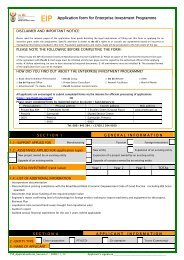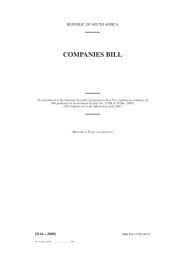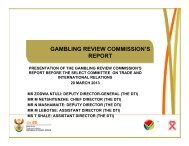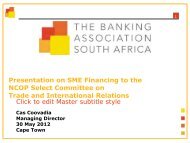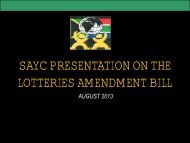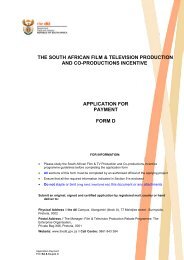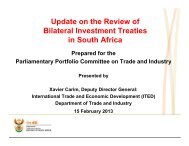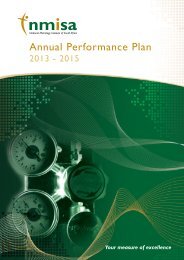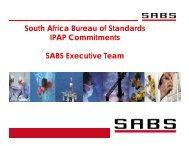Copyright Review Commission Report - ICT Law and Regulation ...
Copyright Review Commission Report - ICT Law and Regulation ...
Copyright Review Commission Report - ICT Law and Regulation ...
- No tags were found...
Create successful ePaper yourself
Turn your PDF publications into a flip-book with our unique Google optimized e-Paper software.
Performers did not need protection, for the only way in which their performance could be exploited was by the publicpaying admission to a concert or play. Performers might be unfairly exploited by impresarios, but that was simply amatter of contract between the performer <strong>and</strong> the impresario.What altered the situation was technology, in particular the invention of the phonograph by Thomas Edison in1877, the pianola by Edwin S Votey in 1897, <strong>and</strong> the cinematograph by the Lumiere brothers in 1895. Theseinventions meant performances could now be ‘fixed’, i.e. embodied in a stable <strong>and</strong> permanent form, enablingthe sound <strong>and</strong> images of the performance to be perceived after the actual performance was over. Thesefixations were artefacts that could be reproduced <strong>and</strong> sold, allowing the performances to be exploited in waysother than by charging admission to the actual event. With the invention of broadcasting (first by radio <strong>and</strong>thereafter by television), performances, whether fixed beforeh<strong>and</strong> or transmitted live, were disseminated to largenumbers of people over vast areas.Despite these developments, for many years performers were not entitled to a share of the income derived fromthe dissemination of their performances (unlike the entrepreneurs who organised the performances). In onerespect, the 1965 Act weakened the position of the record producers. Under the 1916 Act, broadcasts of soundrecordings were covered as ‘performances’, but Section 1 (6) of the 1965 Act (the effect of which is retained inthe proviso to the definition of ‘performance’ in the 1978 Act) stated that the broadcasting or the causing of awork to be transmitted to subscribers to a diffusion service was not to be deemed to constitute aperformance. The performance was to “be deemed to be effected by the operation of the receiving apparatus”.The result was that broadcasters no longer had to pay royalties to the holders of copyright in respect of soundrecordings that were broadcast.3.1.10. The 1965 Act, following the British Act of 1956, provided copyright protection for cinematograph films,broadcasts <strong>and</strong> published editions, but made no provision in respect of performers. The 1978 Act also providedprotection for programme-carrying signals. Although it initially did not repeat the protection given in 1965 topublished editions, this was rectified in 1984 when Section 11A was inserted in the Act by Section 8 of Act 52 of1984. In 1992, copyright protection was given to computer programs when Section 11B was inserted in the Actby Section 10 of Act 125 of 1992.3.1.11. For many years, performers whose performances were recorded only received royalties on the sale of therecordings, often with an advance payment recouped from royalties as <strong>and</strong> when they became payable. Thiswas the case not only in South Africa, but also elsewhere in the world. The record companies who owned thecopyrights to recordings were exclusively entitled to the income from public performances <strong>and</strong> broadcasting ofthose recordings. Originally, performers sought to bring their claims for a share in the revenues generated fromthe playing of their recordings in public or over the air under the Berne Convention, contending that they shouldbe regarded as authors <strong>and</strong> their performances as works. These arguments, however, were rejected at theRevision Conferences of the Berne Convention held in Rome in 1928 <strong>and</strong> in Brussels in 1948 (see Morgan, op.cit., p119). Thereafter, attempts to seek protection for performers were directed at obtaining a separateconvention, which was achieved when the Rome Convention for the Protection of Performers, Producers ofPhonograms <strong>and</strong> Broadcasting Organisations was concluded in 1961. South Africa has not acceded to thisconvention, but in 1967 Parliament passed the Performers' Protection Act 11 of 1967, which gives partial effectto the convention in that sections of the Act cover the same ground as certain articles of the Convention.3.1.12. Section 5 (1) of the Act, as originally enacted, contained the following:- 15 -



